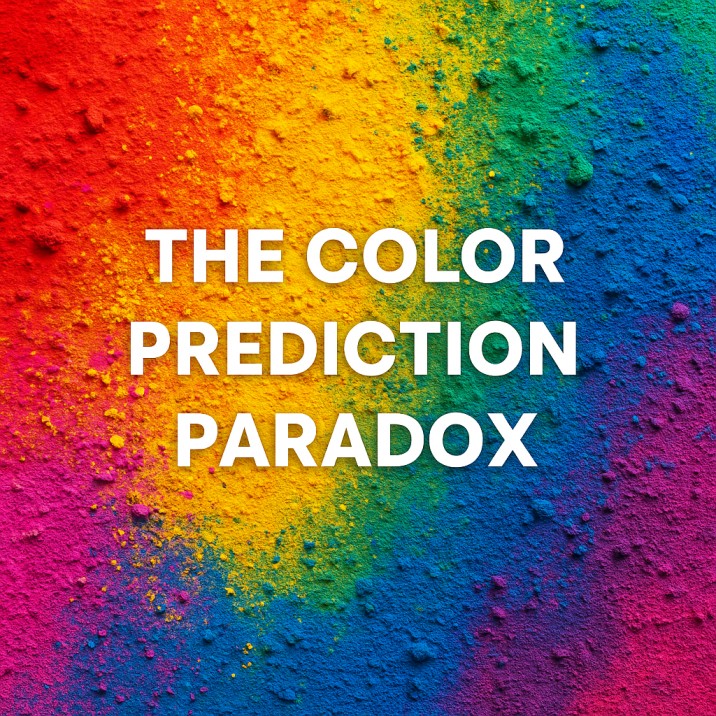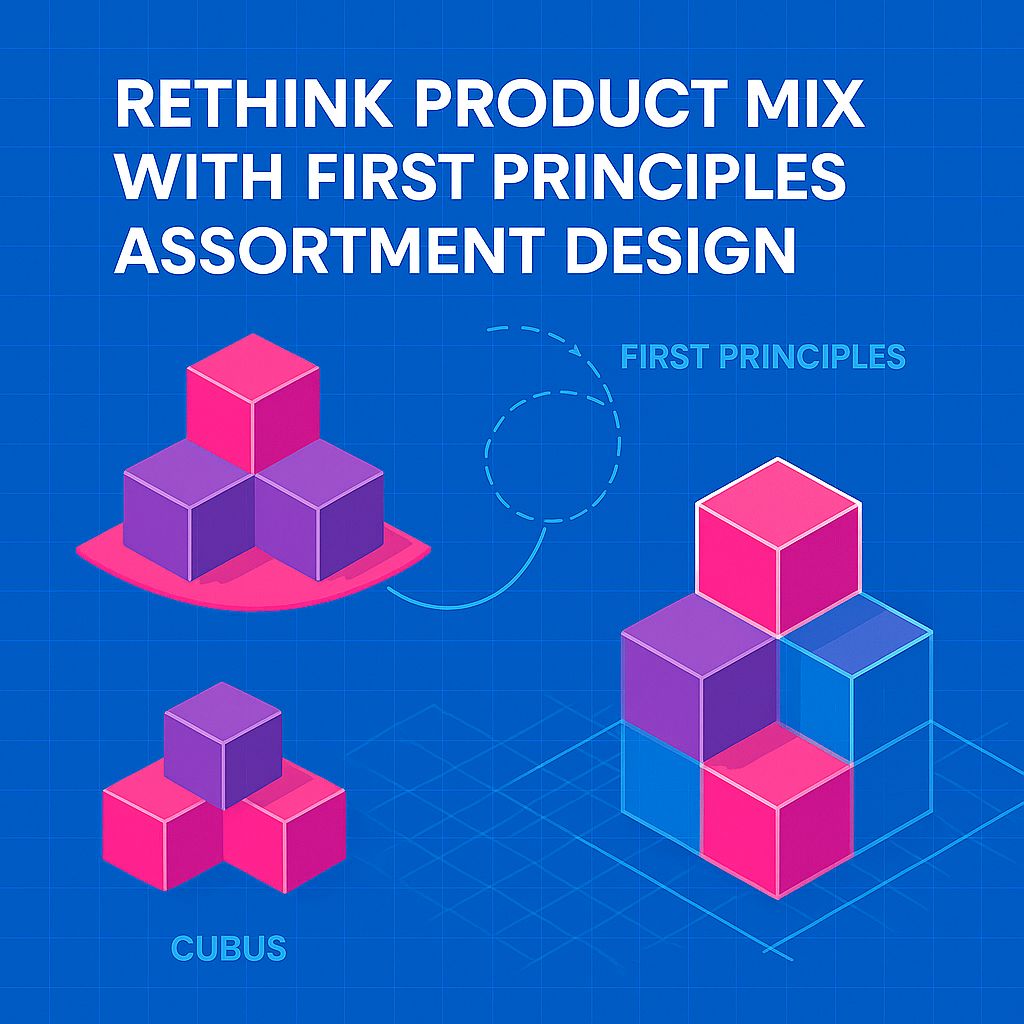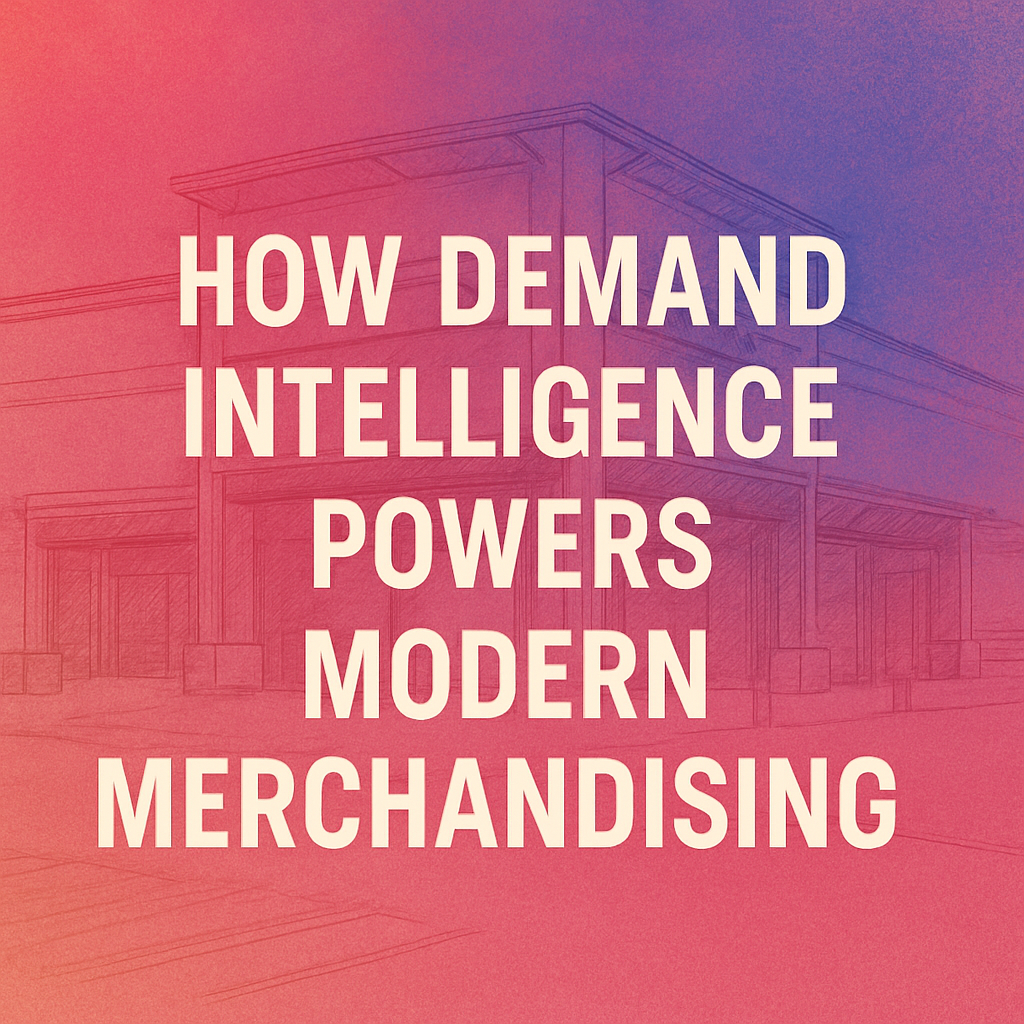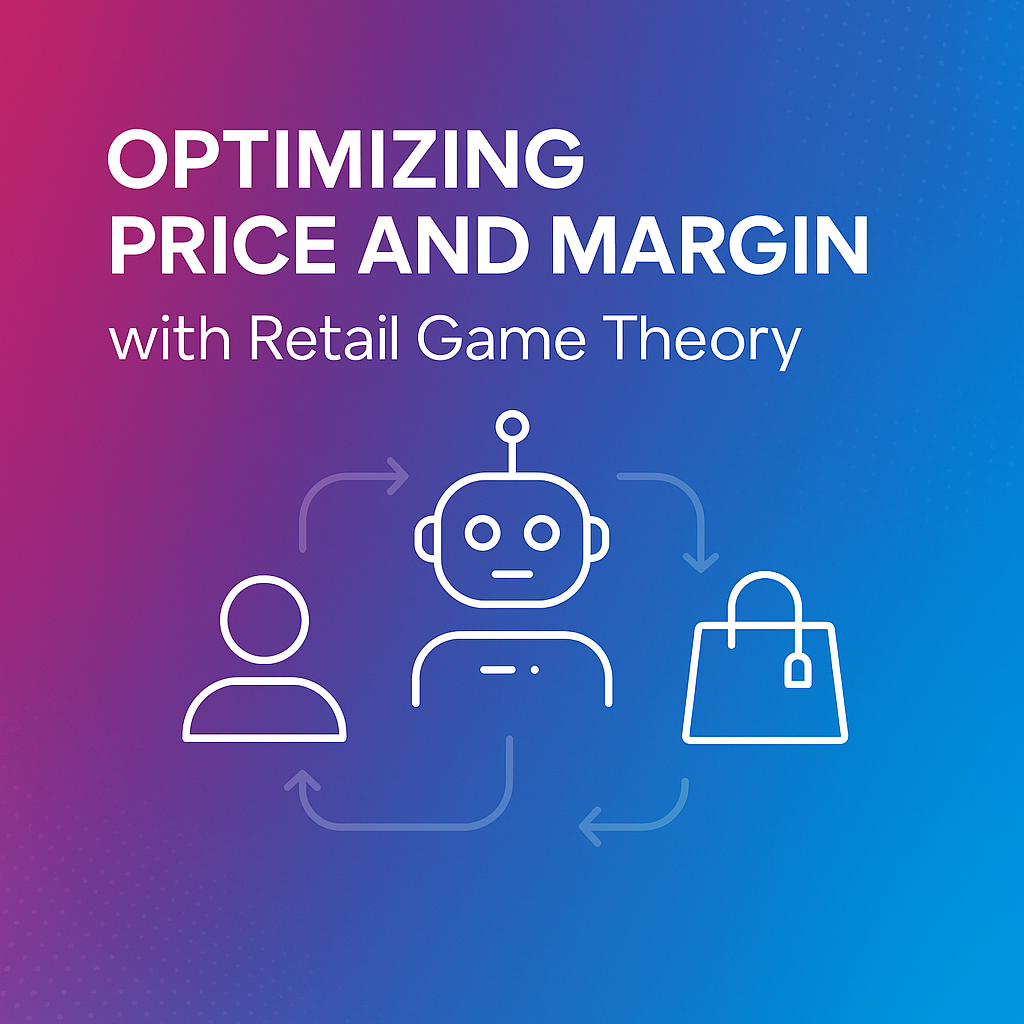The Color Prediction Paradox: How Demand Sensing is Revolutionizing Color Strategy

The color prediction paradox is the trap brands fall into when they try to lock next season’s “winning” colors too early, using top‑down palettes and supplier‑friendly signals, only to discover that real consumer demand moved elsewhere. Three forces make this paradox durable: lead‑time bias (announcing colors 18–24 months ahead), context variance (color meaning flips by category, culture, price tier), and measurement noise (from social photos to lab‑to‑factory color drift). The fix is not to abandon forecasting, it’s to swap “color prediction” for “color demand sensing.” That means nowcasting what people actually intend to buy (searches, saves, wishlists, add‑to‑carts, and clean computer‑vision color reads), aligning decisions to lead times, and continuously aligning inventory decisions as signals evolve. Done right, it reduces misses, markdowns, and waste while preserving creative intent.
1) What is the Color Prediction Paradox?
Color is the fastest, cheapest signal a product can send. But the faster you try to predict it far in advance, the more you risk shaping supply instead of reading demand, and the further your buys drift from what customers end up wanting. That loop is the color prediction paradox: the act of predicting colors too early increases the probability of being wrong when it matters (purchase time).
Why? Because in aesthetic categories (fashion, home, beauty, autos) consumer associations and context do most of the work, not “magic hues.” Decades of research show people prefer colors associated with things they like (blue → clear skies/water), a pattern formalized as Ecological Valence Theory (EVT). But associations are local and time‑varying; the same blue that sells a high‑performance SUV might underperform in intimates or cookware. If your forecast locks twelve to twenty‑four months ahead, it freezes a moving target.
2) How the paradox appears in the real world
2.1 Lead‑time announcements create forecast theater
Global authorities announce “Colors of the Year” two years in advance. Design teams downstream feel pressure to conform, suppliers tool up, and marketing builds stories—before consumers have cast their vote. These calls are thoughtfully researched, but they’re still directional; they can’t see regional micro‑palettes, price‑tier nuances, or platform‑driven surges that surface months later.
2.2 Context variance breaks “universal” color winners
Even if a hue is broadly favored, category norms and task context change outcomes. A saturated red might read as “power” in sneakers, “warning” on a financial app, and “aggressive” on a sofa. EVT explains why preferences differ; it doesn’t guarantee a single palette across every use case or every market.
2.3 Measurement noise multiplies the error
Most color intel today is mined from images, runways, social, e‑commerce. But photos are riddled with filters, white‑balance issues, and lighting differences; without color‑science normalization, a “trend” can be an artifact. Even on the production side, two swatches that match in the lab can diverge on the shop floor if tolerance and illumination protocols are weak.
Stylumia flagged this risk years ago, arguing for computer‑vision pipelines that extract and normalize color before allowing it to inform decisions.
2.4 The bullwhip amplifies color mistakes
When planners treat orders as demand, each tier of the chain magnifies the error. Colors over‑ordered on thin evidence become mass markdowns downstream; colors under‑ordered become lost sales and imitation scramble. This is the classic bullwhip effect, and color is not exempt.
3) Why classic color forecasting misses at scale
Let’s name the structural constraints so we can design around them:
- Timing gap: Seasonal calendars lock too early relative to how fast consumer taste updates. McKinsey’s State of Fashion shows brands leaning into AI to adjust open‑to‑buy and improve inventory accuracy, because static plans miss the moment.
- Signal bias: Heavily publicized palettes can become self‑fulfilling in showrooms, not in carts. The net effect is over‑reliance on supply‑visible signals. Stylumia called this out as “convenience” signals (what’s easy to see) blinding teams to true demand.
- Proxy traps: “We sold out; it must be hot” is shaky logic. Stock‑outs measure availability, not desire. Stylumia’s analysis argues over half of stock‑out events mislead as proxies for demand, especially when visibility and replenishment policies confound the signal.
- New‑product forecasting is hard: Short life cycles, sparse history, and social shocks break many traditional models. Recent reviews across journals stress how volatile fashion‑type products challenge accuracy without external signals.
4) What actually predicts color demand (and what doesn’t)
The paradox eases when we switch from predicting the future to measuring the present, and letting the present pull the plan forward. Economists call this nowcasting: using high‑frequency signals (e.g., search) to estimate what’s happening right now, which, importantly often predicts near‑future demand better than stale historicals.
4.1 High‑value signals you can trust (in order of usefulness)
- Search intent/ buy intent: Color‑qualified queries (“sage green sofa”, “lilac lehenga”) are explicit statements of consideration. Decades of work (Choi & Varian) show search improves short‑term forecasts of retail metrics and autos, so it’s a robust first layer for color. The buy intent can be derived through demand sensing at scale.
- Saves, wishlists, notify‑me: These “soft commitments” precede purchases and correlate with future conversion; they’re category‑specific and privacy‑safe. (Consulting outlooks e.g., Deloitte – highlight that leaders double down on data to personalize around intent.)
- Social imagery (cleaned): When denoised and mapped to a device‑independent space, social images add months‑ahead lift for color/fit forecasting. In a peer‑reviewed MSOM study (Fisher et al.), fine‑grained social features improved forecasting accuracy 24–57% over current practice.
- E‑commerce browse & add‑to‑cart: These reveal price‑tier × color interactions unavailable in social.
- Local exogenous factors: Weather and event calendars shift color preference and buying windows; blending these features improves local allocation decisions. (Industry analyses consistently tie weather to retail swings.)
4.2 Signals to treat with caution
- Runway/editorial without consumer proof: Directional only.
- Global “Color of the Year” calls for SKU buys: Great for story and top‑of‑funnel; risky as primary buy‑depth driver without localized validation.
- Stock‑outs and shelf visibility: Useful operationally, misleading as a demand proxy. Stylumia detailed out how stock outs lie misleading in this blog.
- There are market solutions which mislead the brands and retailers using stock outs as proxy. Be watchful !
5) From prediction to Color Demand Sensing : a working model
You don’t need a moonshot to escape the color prediction paradox. You need a repeatable system that reads intent, cleans the color data, and ties decisions to lead time.
5.1 The Color‑Demand OS (six building blocks)
(1) Normalize the color
- Build a computer‑vision pipeline that:
- Corrects illumination/white balance on social & PDP images
- Extracts pixel‑level color and maps it to industry color standards
- Clusters by hue × saturation × value (HSV) and finish (matte/gloss) for attributes shoppers notice Stylumia documented an internet‑scale approach to pixel‑precise extraction to reduce noise before decisions. Academic work has since advanced automatic color extraction for fashion imagery.
(2) Instrument intent
- Capture color‑qualified search, saves, wishlists, notify‑me, and add‑to‑cart events. Weight these differently by category and price tier. Nowcast weekly demand indices by color family per market. (This follows the “predict the present” logic behind search‑based nowcasting.)
(3) Detect inflections, not just levels
- Look for slope changes (week‑over‑week), breadth across channels, and persistence (e.g., 3–6 weeks) before scaling buys.
(4) Align to lead time
- Convert indices into buy windows: T‑N weeks for new production, T‑2 to T‑4 weeks for re‑buys. Keep a flex OTB to shift color depth as signals move (consistent with McKinsey’s guidance on dynamic open‑to‑buy and AI‑assisted planning).
(5) Allocate locally
- Push micro‑palettes to regions/channels where indices are strongest (e.g., “powder blue knits in coastal stores, clay in inland metros”).
(6) Close the loop
- Share POS + returns (due to color) upstream weekly to dampen bullwhip. Score models on WAPE/MAPE and business outcomes (full‑price sell‑through, markdowns avoided).
6) Case‑style vignettes (anonymized patterns you can replicate)
- Footwear, performance line: Bright secondary color (energy orange) bubbled in social imagery among early adopters; search volume followed 4–6 weeks later. The brand placed a limited micro‑batch, then scaled with a 20% open‑to‑buy reserve. Sell‑through hit target without a markdown cascade. (Mechanism generalizes: use social plus search to time depth.)
- Home textiles: A global palette called a deep blue for the year; local signals showed clay and warm neutrals spiking in Tier‑2 markets due to climate and décor cycles. The retailer split buys: blue for editorial windows; clay for core volume. Markdown exposure fell; reviews improved. (Lesson: let story and sell coexist.)
- Beauty packaging: Moving from glossy brights to matte, nature‑coded greens/browns improved trust and WTP—but only after A/B nowcasts validated the shift. (Mechanism: non‑hue attributes matter; test finish and saturation per category.)
7) Evidence corner: what the research and consultants agree on
- Preferences are association‑driven: EVT remains a strong explanatory theory, people like colors linked to liked objects. This refutes the idea of a single global winner color.
- Announcing far ahead is normal, but risky if used as a buy rule: There are agencies legitimately call colors two years out; indication for design, but validate locally for commencial decisions and inventory.
- AI + dynamic OTB improves accuracy: Firms report double‑digit gains when they move from static plans to AI‑informed, flexible buys. (McKinsey documents inventory‑forecasting lift and open‑to‑buy agility in recent State of Fashion reports.)
- Social signals work when cleaned and combined: Fine‑grained social features add 24-57% forecasting lift vs. current practice in fashion; use them to set initial shipment quantities and color depth.
- Beware of proxy traps: Stock‑outs and shelf visibility are not demand; color proxy noise is widespread. Stylumia’s points of view (“Tyranny of Convenience,” “Stock‑Out Lies”) are worth institutionalizing in buying playbooks.
- Bullwhip is real: Without POS‑anchored feedback and weekly re‑allocation, color mistakes amplify upstream.
8) A step‑by‑step playbook to escape the color prediction paradox
Step 1 : Define the demand stack
Pick 8–12 color families you care about per category and region. For each, wire up search, saves, wishlists, notify‑me, add‑to‑cart, and clean social imagery. Start with one hero product per family.
Step 2 : Clean the color
Adopt a color‑science pipeline (illumination correction → device‑independent space → cluster to your color library). The goal: reduce false positives from filtered photos and map what people see to swatches you can actually buy. (Stylumia’s process note + academic advances on automatic color extraction are helpful references.)
Step 3 : Nowcast the present
Weekly, compute a Color Demand Index (CDI) per family × category × region:
- CDI = weighted blend of search (40–60%), saves/wishlists (20–30%), clean social share (10–20%), and A2C (10–20%), adjusted for baseline traffic. (Your weights will vary; re‑estimate monthly.)
- Flag inflections (slope + breadth + persistence) rather than single spikes. That’s your green light for depth.
Step 4 : Align to lead time
Create T‑N windows: if your cut‑to‑ship is 10-12 weeks for knits, treat a 6‑week persistent CDI rise as a re‑buy signal, not a net‑new design signal. Hold flex OTB (e.g., 10-20%) to swing depth between adjacent color families as CDI changes. (McKinsey highlights dynamic OTB as a practical lever.)
Step 5 : A/B the non‑hue attributes
Don’t ignore finish, saturation, and contrast. These often move trust, perceived potency, and legibility more than hue alone. A/B them on PDPs and in ads before committing packaging or bulk dye lots.
Step 6 : Localize allocation
Push inventory toward stores/regions where CDI is strongest; starve low‑signal regions. Re‑balance weekly.
Step 7 : Close the loop, shrink the bullwhip
Feed POS, returns‑due‑to‑color, and on‑hand back into planning weekly to dampen amplification. Over time, you’ll reduce the variance between orders and sales—the hallmark of escaping the paradox.
9) What to measure (and how to talk about success)
Core KPIs
- Sell‑through @ full price by color family
- Markdown rate and weeks on hand for color variants
- WAPE/MAPE on color‑level forecasts
- Hit‑rate of color probes (micro‑batches or fake‑door tests → scaled wins)
- Return rate due to “color not as expected” (execution and tolerance metric)
Narrative to leaders
- “We replaced color prediction with color demand sensing. We use early intent (search/saves), cleaned visual signals, dynamic demand sensing of the relevant market, and dynamic OTB to flex into what customers are actually choosing, not what we thought 18 months ago.”
10) The delicate role of “Color of the Year” inside a demand‑first system
Global colors have marketing power, keep them as editorial anchors.
But separate the story palette from the volume palette. Use the story color for campaigns, capsules, or collabs; allocate volume to the micro‑palettes your CDI validates right now in each market. This way, you enjoy the halo without betting the P&L on a narrative. (It also de‑risks supplier echo chambers.)
11) The road ahead: agents, control towers, and on‑demand
Two shifts will help teams institutionalize the fix:
- Retail “control towers” and demand‑sensing layers– long used in supply chains are moving up to the merch and buying desks. They integrate high‑frequency signals, enable rapid re‑allocation, and improve best‑fit forecasting. (Consulting analyses describe these towers as key to agility.)
- Design‑to‑factory responsiveness: As on‑demand and near‑shore capacity expands, the penalty for mid‑season color pivots falls. McKinsey has been explicit: fashion is shifting from push to pull, with production triggered by actual demand rather than long‑range guesses.
12) Frequently asked (tough) questions
“If social is so noisy, why use it?”
Because when you clean it and combine it with search , demand science and browse, it becomes a leading indicator. The MSOM paper shows material forecast lift for color and fit months ahead. The trick is to demand engineering discipline (illumination correction + color mapping + de‑duplication) before modeling.
“Doesn’t a global palette create cohesion?”
Yes—cohesion for brand storytelling. But volume should follow localized intent. Your palette can be coherent without being monocultural.
“Can AI replace the buyer’s eye?”
No. It augments the buyer with early intent and guardrails.
13) Putting it all together (a one‑quarter plan)
- Period 1–2: Stand up search & save/wishlist pipelines for 10 color families × 2 categories × 3 regions. Start social image ingestion with color normalization. (Borrow Stylumia’s principle: pixel‑level extraction, then decisions.)
- Period 3–4: Launch Color Demand Index dashboards; run two A/Bs on finish/saturation and one fake‑door color test per category.
- Period 5–6: Set a 10–20% flex OTB; shift buy depth toward families with persistent CDI rises.
- Period 7–8: First allocation swing (DC → stores) based on CDI; begin weekly POS/returns feedback to shrink bullwhip.
- Period 9–12: Scale winners; document “hit patterns” and misses; move the system from pilot to BAU.
Choose the time period based on your supply chain lead times, responsive the better.
The color prediction paradox isn’t a failure of creativity. It’s a systems problem: long lead times, weak proxies, and noisy color data collide with human context to produce misses. You won’t fix it by picking a different “winning hue.”
You’ll fix it by measuring the present cleanly, aligning decisions to lead time, and letting intent pull supply.
Treat top‑down palettes as stories that open doors. Let consumer demand signals decide what goes through them.
Ready to sense color demand, We’ll help you stand up the Color Demand Index, so your next buys reflect what consumers actually want, not just what the calendar predicted.
Reach out to elevate your color game here.
References & further reading
- The Tyranny of Convenience: A Blinder to True Demand Forecasting—on proxy traps and why forecasts must be demand‑first.
- Stock‑Out Lies: Demand Intelligence Reimagined—why shelf signals aren’t demand.
- The Science of Color Analysis: computer‑vision extraction and color normalization at scale.
- McKinsey State of Fashion 2025: AI demand planning improving accuracy; dynamic open‑to‑buy.
- McKinsey Fashion on demand: shift from push to pull as responsiveness increases.
- MIT Sloan Management Review: the Bullwhip Effect (Lee, Padmanabhan, Whang): why errors amplify.
- PNAS / EVT: why color preferences are association‑driven (Palmer & Schloss)
- MSOM (INFORMS): The Value of Social Media Data in Fashion Forecasting: fine‑grained social features forecast color and fit months ahead.
- Deloitte Retail Outlook: why leading retailers are leaning into data + agility to navigate demand shifts.



